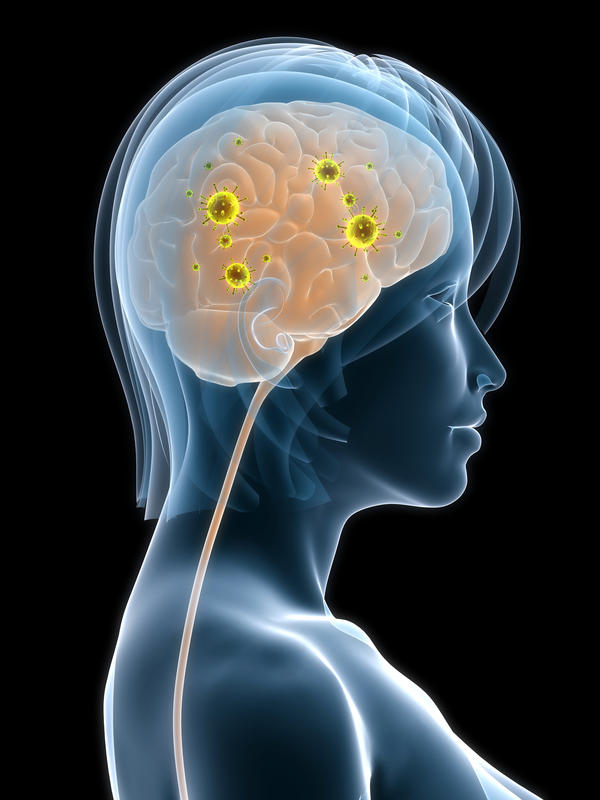Asymptomatic Neurosyphilis As the term suggests, the patient lacks symptoms or signs of neurologic disease, although pathologic involvement of the meninges and possibly of the nervous system parenchyma is implied. The diagnosis rests on the finding of cellular, chemical, or immunologic abnormalities of the cerebrospinal fluid. This is the most common form of neurosyphilis and constituted about 30 per cent of cases in one large neurosyphilis clinic. With adequate treatment (see Treatment) the development of neurologic symptoms can be prevented in most cases.
Symptoms and signs of an acute meningitis are encountered only rarely by physicians, an incidence of less than 2 per cent among syphilitic patients being reported from one general hospital series. It seems likely that some patients with mild or even moderate symptoms go unnoticed. Symptomatic syphilitic meningitis usually occurs during the early weeks or months of infection, often during the period of the secondary rash or concurrently with a mucocutaneous relapse in a patient previously but inadequately treated. The illness is usually of less than a month’s duration, but symptoms may persist for longer periods. Headache, vomiting, malaise,’ and irritability are prominent symptoms. Kernig and Brudzinski signs develop.
Occasionally, confusion, delirium, seizures, and cranial nerve palsies (seventh and eighth nerves most common) occur. Argyll Robertson pupils are not part of the constellation of findings in acute syphilitic meningitis. Acute syphilitic hydrocephalus with evidence of increased intracranial pressure, including papilledema, may lead to confusion with other inflammatory and neoplastic conditions. But the diagnosis should not be difficult if the physician considers the possibility of syphilis.
The cerebrospinal fluid will always contain an increased number of white blood cells (average about 500 per cubic millimeter — usually mononuclear, rarely polymorphonuclear), elevated total protein (average, about 100 mg. per 100 ml.), normal sugar concentrations (reduced rarely), and syphilitic reagins. An abnormal gold-sol (Lange) curve will be found in 70 per cent of cases. The serologic tests for syphilis are usually but not always positive.The response to therapy is generally prompt and gratifying, although an occasional patient will subsequently develop some other form of neurosyphilis.
Meningovascular Syphilis.
Although the incidence of this form of neurosyphilis is difficult to ascertain, a figure of 3 per cent of syphilitic patients has been recorded. As with the other forms of neurosyphilis, men are more often affected than women (3:1). Patients with meningovascular syphilis present most commonly from two to ten years after the primary lesion.. Symptoms and signs of meningitis are lacking although headache is a frequent complaint. The major neurologic abnormalities result from the arteritis and consequent arterial thromboses.
The neurologic deficits may develop slowly as the circulation through small vessels becomes compromised, or there may be an abrupt loss of function consequent upon occlusion of a major vessel. The specific syndromes depend upon the distribution of infarction within the brain or spinal cord. The patient may develop hemiplegia, hemisensory defect, dysphasia, or homonymous hemianopia. Involvement of the cortex accounts for seizures in a small percentage of cases.
Various spinal cord syndromes have been described. A transverse myelopathy can be expected to produce varying degrees of paraparesis, sensory loss, and impaired function of bladder and bowel. Infarction of the anterior two thirds of the cord, with resultant paraplegia and loss of pain sensation below th6 lesion, follows occlusion of the anterior spinal artery. Sensory functions subserved by the posterior columns are usually preserved. Asymmetric infarction of one half of the spinal cord will result in weakness and impairment of light touch and position sense on that side and diminished pain and temperature sensation on the opposite side below the anatomic lesion (Brown-Sequard syndrome).
Some abnormality of the cerebrospinal fluid is always found in meningovascular syphilis. A lymphocytic pleocytosis (few to 100 cells per cubic millimeter) and/or an elevated protein concentration is characteristic. The globulin content is often elevated; this is reflected in an abnormal Lange curve. Syphilitic reagins are nearly always present in the cerebrospinal fluid as well as in the blood.
The progress of meningovascular syphilis can usually be halted by specific treatment, but the degree of functional recovery depends upon the extent and location of the infarcts and upon the many complex physiologic factors that condition recovery in cerebrovascular disease of any type.
